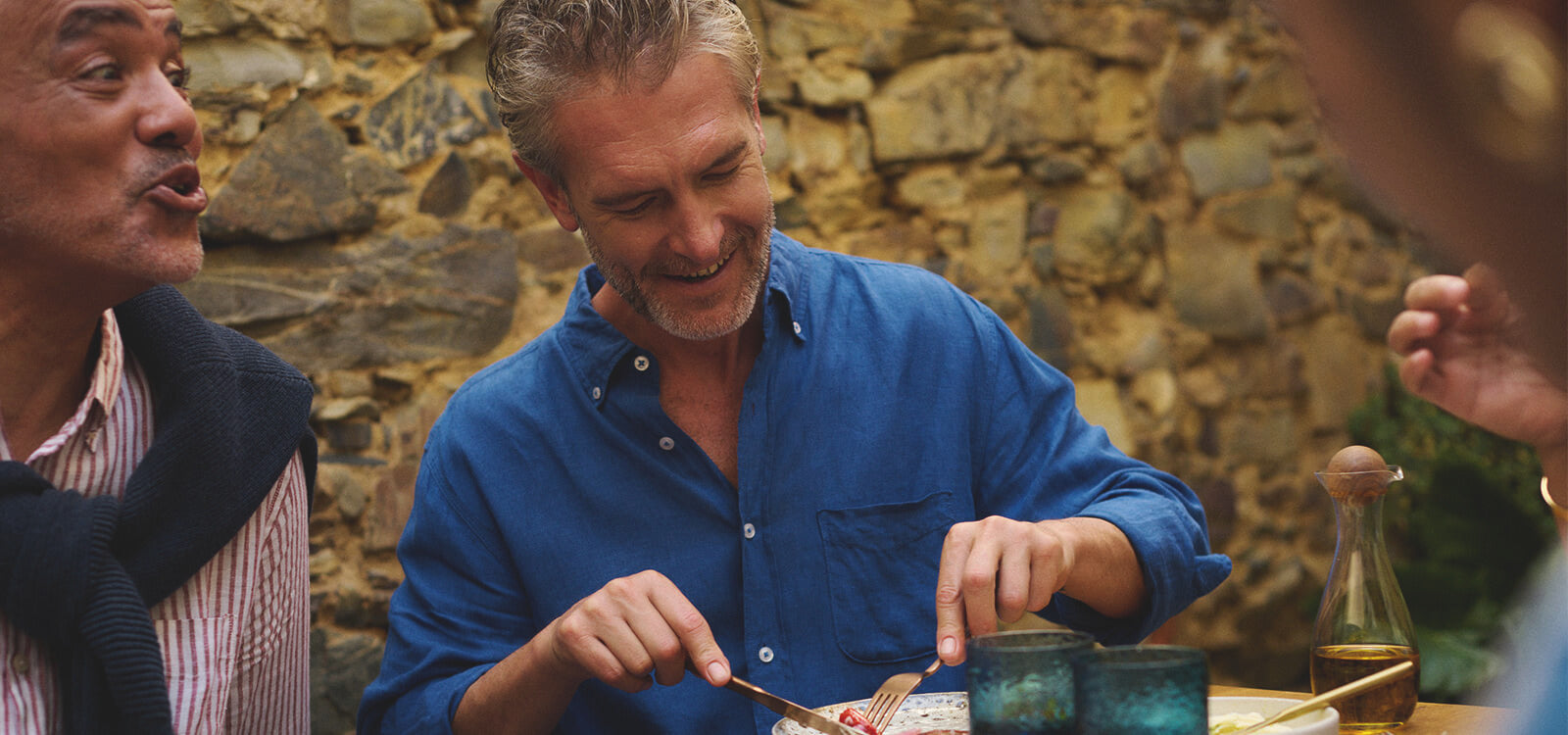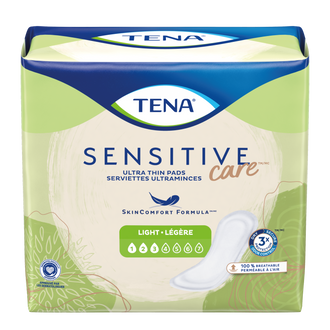Jun 07, 2024
What is Male Urinary Incontinence?
Male urinary incontinence is the involuntary leakage of pee in men, meaning it is released when you don’t intend for it to happen.1 Urinary incontinence is common in both women and men, especially with age or certain health conditions. It can range from occasional dribbling to a sudden, strong urge to pee that’s hard to control.1
While it could affect daily activities, confidence, and quality of life, it’s important to know that it’s manageable with the right care and support.
What are the Different Types of Urinary Incontinence?
There are several types and causes of weak bladder in men. You can read about the main types of urinary incontinence below.
Urge urinary incontinence
Urge incontinence is the most common type of incontinence in men and refers to a sudden, intense urge to pee followed by involuntary leakage.
One of the main causes of urge incontinence in men is an enlarged prostate, which causes bladder-emptying difficulties, and gives you the sensation of needing to pass urine when you don’t want to, including during the night.
In some cases, these urges may be the result of bladder irritation from an UTI, or bladder stones. It can also develop as a complication of a nerve- or brain-related illness such as stroke, Parkinson’s disease, or multiple sclerosis. But sometimes the cause is unknown.
Some more Insights on Urge Incontinence:
- Understanding Urinary Incontinence in Adults
- Overactive Bladder in Men: Symptoms, Causes, and Treatments
Stress urinary incontinence
Stress incontinence refers to involuntary leakage that occurs when you put pressure on your bladder by sneezing, laughing, or lifting something heavy, for example. The sphincter or pelvic floor muscles and ligaments that support the bladder are too weak to hold pee in. This type of incontinence is not generally common in men but may develop in some men after prostate surgery.
Read > What is Stress Incontinence?
Post-micturition dribble
This condition involves small involuntary leakages immediately after peeing and is the result of urine remaining in the urethra. Many men over 60 experience post-micturition dribble (PMD), but it can also appear at a younger age. PMD may be due to weakness in the pelvic floor muscles that surround the urethra. If so, it can be treated by exercising the pelvic floor muscles, and by milking the urethra after voiding.
When pee remains in the urethra, a dribble can occur after urinating. “Milking” the urethra can be helpful. This is done by pressing gently on the urethra behind the scrotum, to push out the trapped urine.
Overflow incontinence
If you have a constant or intermittent flow of pee you might be dealing with overflow incontinence. For men, this is usually caused by something obstructing the flow of urine, causing the bladder to overflow and then leak.
Mixed urinary incontinence
Mixed incontinence refers to experiencing more than one type of urinary leakage at the same time1 most commonly a combination of stress incontinence and urge incontinence.
In other words, you might leak when you cough, laugh, or lift something heavy (stress incontinence), and also find yourself rushing to the bathroom with little warning (urge incontinence). Mixed incontinence can be caused by a combination of factors, including prostate issues, nerve damage, or weakened pelvic floor muscles.
The Most Common Symptoms of Bladder Problems for Men
If you experience any of these symptoms, they can be signs of common bladder problems:
- Frequent urge to pee
- Difficulty in starting to pee
- Frequent urination at night
- An interrupted or weak urine stream
- Feeling that the bladder is not emptied after peeing
- Urinary dribbling
- Accidental urination when coughing, sneezing, laughing or lifting something heavy1
You may find the symptoms both uncomfortable and potentially embarrassing, but there is help. The best way to establish which type of bladder problem you are dealing with is to consult a doctor who can understand the cause, rule out other issues and begin to help you find the right treatment.
What causes urinary leakage in men?
For the urinary system to do its job, the brain, muscles, and nerves need to work together to hold the urine in the bladder and not release it until you are ready. However, there are many factors that can interfere with this process.
Common causes for urinary leakage are:
- Medication, such as diuretic medications can increase the risk of urinary leakage
- Urinary tract infections
- Temporarily weakened muscles due to prostate surgery
- Changes in prostate size, like a swollen prostate can obstruct urine from passing
- Being overweight puts extra pressure on abdominal and pelvic muscles, which makes it harder to avoid urinary leakage
- Diabetes or neurodegenerative diseases (Alzheimer's for example)
- Physical actions like coughing, sneezing, or laughing1
- Food and beverages like caffeine, alcohol and spicy foods can irritate the bladder and cause leakage.1
As you can see, the cause of urinary leakage in men can depend on many factors. Therefore, it's important to get a good assessment of your situation so you can get the right treatment. This means that it's important to get a proper diagnosis from your doctor.
Explore the Detailed Causes of Incontinence in Men
Common Causes of Different Types of Male Incontinence
Urge incontinence
Urge incontinence is also known as an "overactive bladder" and it's the most common type of urinary leakage that men suffer from. Urge incontinence is when you experience a sudden urge to pee but can't hold it in until you reach a toilet. You may need to pee more than 4 to 8 times a day, as well as several times during the night. This is often linked to an enlarged prostate or the aftermath of prostate surgery.
Stress incontinence
If coughing, sneezing, laughing, or lifting heavy weights usually results in urinary leakage, you may be dealing with stress incontinence. Stress incontinence is most common in men who've recently had prostate surgery.
After-dribble
This is when a few drops of urine leak after you've been to the bathroom, even if you've 'waited and shaken'. There are two types of after-dribble men experience, post-micturition dribble and terminal dribble. After-dribble happens because the bladder doesn't empty completely while you pee. Instead, the urine accumulates in the tube leading from your bladder. A common cause for after-dribble is an enlarged prostate or weakened pelvic floor muscles.
Practical Solutions and Home Remedies for Male Incontinence
There are several simple changes and habits that can help improve bladder control:
- Consult your doctor. The best first step is speaking with your doctor, who can help identify the cause, such as an enlarged prostate, and recommend the right treatment for you.
- Treat an enlarged prostate (if needed). Managing prostate health can greatly reduce urgency and improve bladder control.
- Do pelvic floor exercises.1 Strengthening your pelvic floor muscles can help prevent leaks and give you better control. Learn more about pelvic floor exercises for men.
- Limit caffeine and alcohol. These drinks can irritate your bladder and make leakage worse, so cutting back can help ease symptoms.
- Adjust your diet. Spicy foods, citrus, and artificial sweeteners can sometimes trigger urgency, so consider reducing them if they seem to cause problems.
- Manage hydration smartly. Drink water throughout the day instead of all at once to avoid overwhelming your bladder.
- Plan regular bathroom visits. Try to go to the bathroom every 2–4 hours, even if you don’t feel the urge, to prevent unexpected leaks.
- Reduce fluids before bedtime. Cutting down on drinks in the evening can help minimize nighttime leakage.
- Track your symptoms. Keeping a bladder diary can help you spot patterns and triggers, making it easier to manage symptoms and share useful info with your doctor.
For more simple lifestyle tips, check out Home Remedies You Can Try for Male Incontinence.
Protective Products: Guards, Shields, and Pads
Managing male incontinence isn’t just about lifestyle changes; the right products can make a huge difference in daily comfort and confidence.
Whether you’re dealing with light drips or more frequent leaks, there are professional incontinence products designed to fit your needs and help you feel secure throughout the day. Here’s a quick guide to what’s available and how to choose:
- Absorbent pads and guards (disposable): These are slim, discreet products that fit inside your regular underwear and are designed for light to moderate leaks. Perfect for men who experience occasional drips or small leaks throughout the day. Shop men’s incontinence guards and shields
- Absorbent underwear (disposable & reusable): For moderate to heavier leaks, absorbent underwear offers more coverage and protection, while still looking and feeling like regular underwear. Reusable options are great for long-term use and convenience. Shop men’s incontinence underwear
- Incontinence briefs (disposable): These are designed for more severe incontinence and offer a high level of absorbency and protection. They’re ideal for overnight use or when you need maximum security. Shop incontinence briefs
- Bed protectors and other absorbent solutions: For extra peace of mind, especially at night, bed protectors can keep mattresses and furniture dry and protected. Shop bed protectors
Choosing the right product
- If you experience light leaks or drips, start with slim guards or shields.
- For moderate leaks or more active days, absorbent underwear can provide comfort and confidence.
- For heavy leaks or overnight protection, briefs are the best option.
- Don’t forget extra protection for bedding or furniture if needed.
Not sure how to get started? Check out:
- How to wear a male incontinence guard
- Men Incontinence Products vs. DIY Solutions
- How often should you change your Incontinence guards
You're not alone
Urinary leakage happens to 1 in 4 men*, making it a very common occurrence. Naturally, urinary leakage differs from man to man but regardless if you're dealing with just a few drops every now and then or you're dealing with larger leaks, you can rest assured in knowing that there's help available and there are ways to help you stay in control of urinary leakage.
References
1. Mayo Clinic. ‘Urinary Incontinence Diagnosis and Treatment’. 2023. Available from: https://www.mayoclinic.org/diseases-conditions/urinary-incontinence/diagnosis-treatment/drc-20352814







